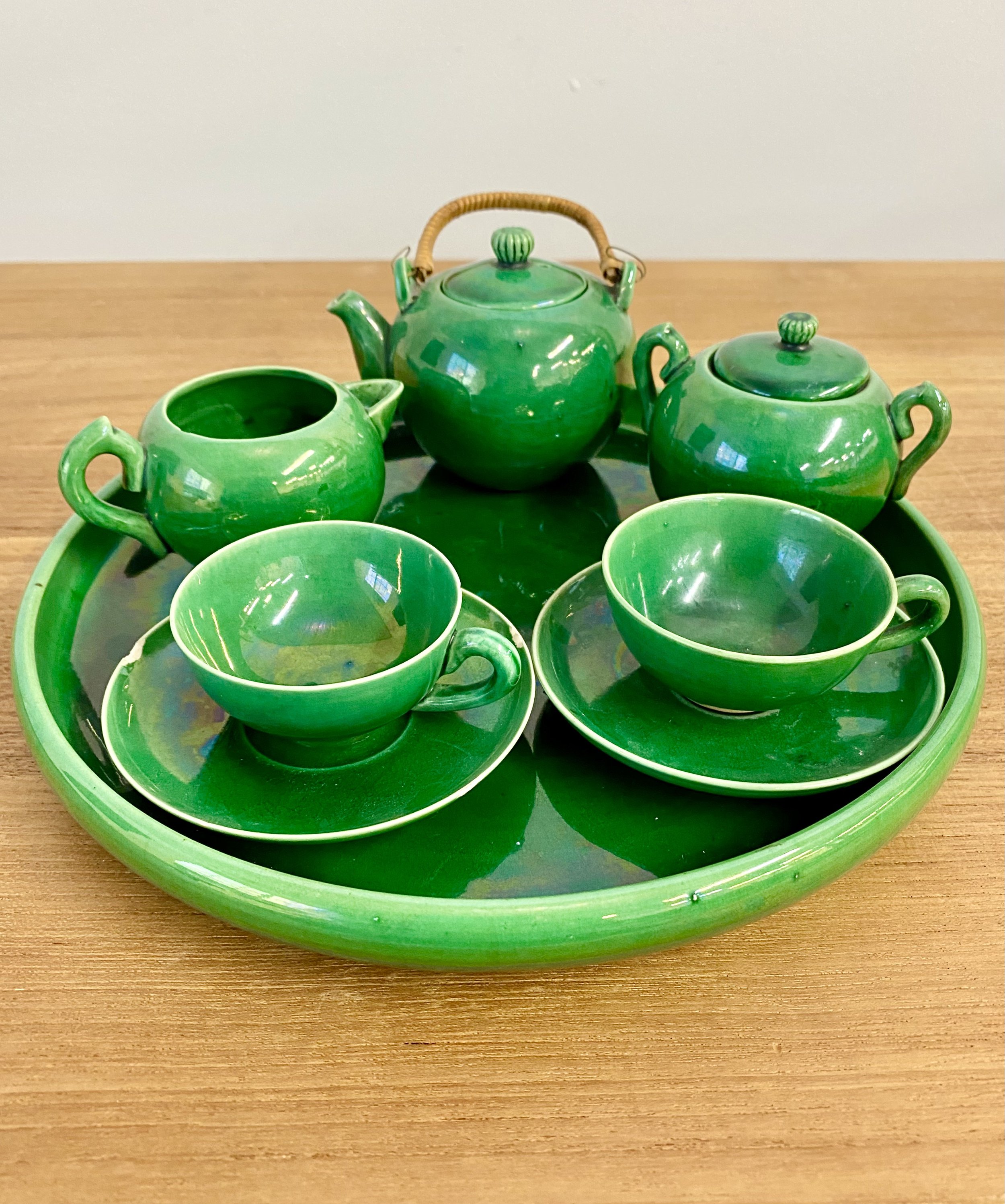 Image 1 of 5
Image 1 of 5

 Image 2 of 5
Image 2 of 5

 Image 3 of 5
Image 3 of 5

 Image 4 of 5
Image 4 of 5

 Image 5 of 5
Image 5 of 5






Awaji Mini Tea Set
Absolutely the most adorable tiny tea set imaginable. The whole thing is just 8 inches across! No fussy decorations, just a luscious malachite green color. The perfect size for having a tea party with your dolls, or perhaps your cat (if it's well-behaved).
A wonderful example of a rather unusual type of Japanese pottery, called Awaji ware (Awaji-yaki, 淡路焼). The Awaji potteries were founded by in the 1830s by Minpei Kashu, a successful businessman, doctor, and scholar, who had studied under master potter Ogata Shuhei in Kyoto. Minpei was eager to bring a new industry to his island province, located in Japan’s inland sea, between Honshu and Shikoku. Initially, Awaji wares were made for local use, but an export trade developed after the pottery was well-received at international expositions. While keeping its essential character, Awaji pottery responded to international art movements — Art Nouveau and Art Deco especially. Because of its use of simple, bold decoration and forms, later Awaji ware can be mistaken for American or European art pottery. Alas, the ravages of World War II brought an end to pottery-making on the island of Awaji.
This set is marked “JAPAN,” which puts the date of manufacture sometime between 1890 and 1922 (after this date, the phrase “Made in Japan” was required). There is also a tiny mark on the under-plate, in the form of a "chidori" (a general term for small birds that live near the water and flock together). The chidori was the mark of the Danto kiln, one of the primary potteries on the island.
Some small chips to one saucer, otherwise unmarked. 8" wide by 3" tall.
Absolutely the most adorable tiny tea set imaginable. The whole thing is just 8 inches across! No fussy decorations, just a luscious malachite green color. The perfect size for having a tea party with your dolls, or perhaps your cat (if it's well-behaved).
A wonderful example of a rather unusual type of Japanese pottery, called Awaji ware (Awaji-yaki, 淡路焼). The Awaji potteries were founded by in the 1830s by Minpei Kashu, a successful businessman, doctor, and scholar, who had studied under master potter Ogata Shuhei in Kyoto. Minpei was eager to bring a new industry to his island province, located in Japan’s inland sea, between Honshu and Shikoku. Initially, Awaji wares were made for local use, but an export trade developed after the pottery was well-received at international expositions. While keeping its essential character, Awaji pottery responded to international art movements — Art Nouveau and Art Deco especially. Because of its use of simple, bold decoration and forms, later Awaji ware can be mistaken for American or European art pottery. Alas, the ravages of World War II brought an end to pottery-making on the island of Awaji.
This set is marked “JAPAN,” which puts the date of manufacture sometime between 1890 and 1922 (after this date, the phrase “Made in Japan” was required). There is also a tiny mark on the under-plate, in the form of a "chidori" (a general term for small birds that live near the water and flock together). The chidori was the mark of the Danto kiln, one of the primary potteries on the island.
Some small chips to one saucer, otherwise unmarked. 8" wide by 3" tall.